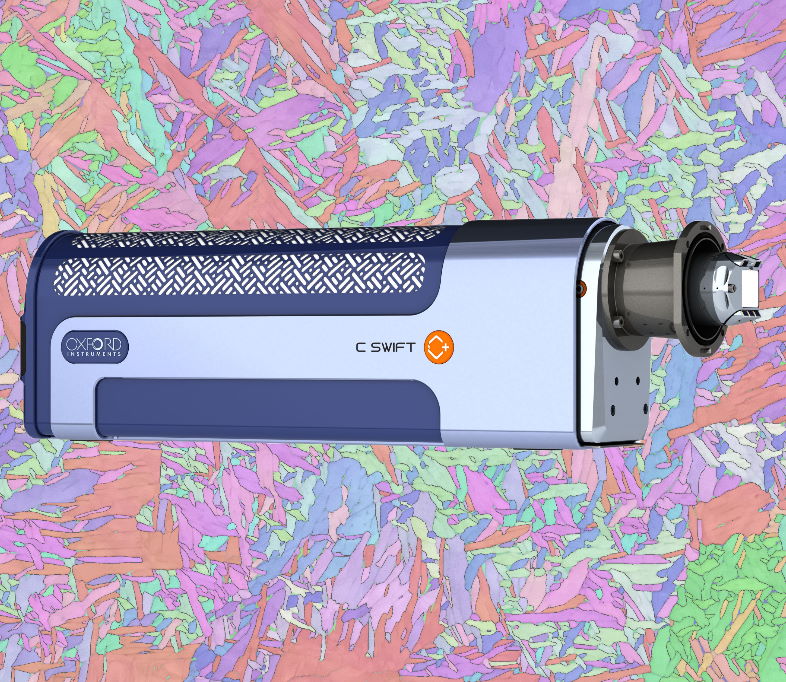C+ Series EBSD Detectors
The C+ series EBSD detectors, the C-Nano+ and the C- Swift+, are 2nd generation entry-level detectors designed for every type of EBSD application.

The C-Swift+ is a high-speed and versatile entry-level EBSD detector designed for routine materials analysis and high throughput sample characterisation.
The C-Swift+ benefits from many of the features that have made the Symmetry such a groundbreaking EBSD detector including, of course, a customised CMOS sensor designed for EBSD.
Guaranteed indexing speeds of > 2000 pps
622 x 512 pixel EBSPs at 250 pps
Fibre optics delivering extreme sensitivity for low energy and low current analyses
Distortion free images
The C-Swift+ is a class-leading, high throughput EBSD detector. As with the Symmetry S3 detector, the C-Swift+ uses a customised CMOS sensor coupled with fibre optics, to deliver both speed and sensitivity, ensuring high quality results on even the most challenging materials.
The C-Swift+’s maximum speed of 2000 pps is achieved with good pattern resolution (156 x 128 pixels), representing 4 times the number of pixels than is used by a comparable CCD-based detector operating at much lower speeds, ensuring reliable indexing, high hit rates and impressive throughput on all types of samples. The distortion-free optics, in partnership with the powerful indexing algorithms in the AZtec software, enables the C-Swift+ to deliver excellent angular precision down below 0.05°. For applications that demand higher quality patterns, the C-Swift+ can collect 622 x 512 pixel patterns at speeds up to 250 pps, making it ideal for complex multi-phase samples and detailed phase analysis.
This is a detector that has been designed for fast, effective sample characterisation. Every component of the system, from the unique proximity sensor to the optional integrated forescatter detectors, has been designed to maximise performance and ease of use, and to make EBSD a standard tool in every laboratory.
The C-Swift+ detector sets a new standard when speed is key:
The C+ series EBSD detectors, the C-Nano+ and the C- Swift+, are 2nd generation entry-level detectors designed for every type of EBSD application.
Symmetry S3 is a 3rd generation detector based on the advanced CMOS technology and unique design features that have made Symmetry the market’s leading EBSD detector.
This 16 page brochure illustrates why AZtec is the leading EBSD analysis platform on the market. Covers both hardware and software.
EBSD Explained is a 24 page tutorial that not only gives newcomers a solid foundation in the underlining science of the subject, but also shows how the theory is applied in practice to get reliable and accurate EBSD results.
Learn about a new phosphor screen for the Oxford Instruments CMOS EBSD detector range that uses an optical interference filter to block out the infrared signal during high temperature EBSD experiments. This new technology enables faster and more sensitive analyses of microstructural changes measured in-situ at high temperatures.